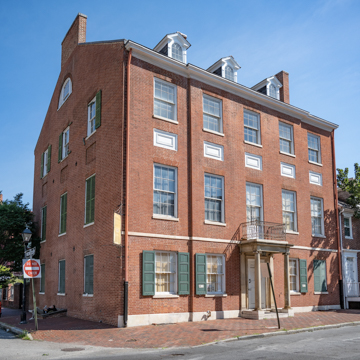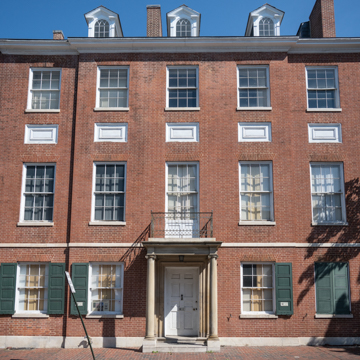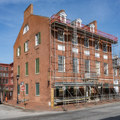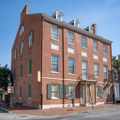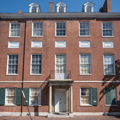Touted in its day as the finest house in Baltimore, this remains one of the city’s best examples of Federal period architecture. It was designated a National Historic Landmark as the last residence of Charles Carroll of Carrollton, a signer of the Declaration of Independence. It stands in the former Jonestown, Baltimore Town’s earliest neighborhood, erected for wealthy merchant Henry Wilson. Although its architect is not known, it has been speculated it was William F. Small.
In 1821, it was acquired by Carroll for his daughter Mary and her husband, merchant banker Richard Caton. In later life, Carroll left Doughoregan Manor each year to spend the winter months here, making it his permanent residence from 1827 until his death in 1832. While imposing, the design of the house is elegantly restrained; it is constructed of Flemish-bond brick with a central pavilion and a gable roof with interior slab chimneys. It rises three-and-a-half stories to encompass a ground level with a counting room where Caton received his business associates (originally with its own exterior entrance, since infilled) and an open elliptical staircase that rises the full height of the house. The elevated second floor contained the primary entertaining rooms with bedchambers above. The house was bought by the City in 1914 as part of the centennial commemoration of the 1814 Battle of Baltimore during the War of 1812 (followed by its purchase of the nearby c. 1793 Star-Spangled Flag House at 844 Pratt Street in 1929). The Carroll Mansion opened in 1918 as Baltimore’s first vocational school, becoming its first recreation center in 1929 and a New Deal-era settlement house in 1935. It was restored and opened as a house museum in 1967.








